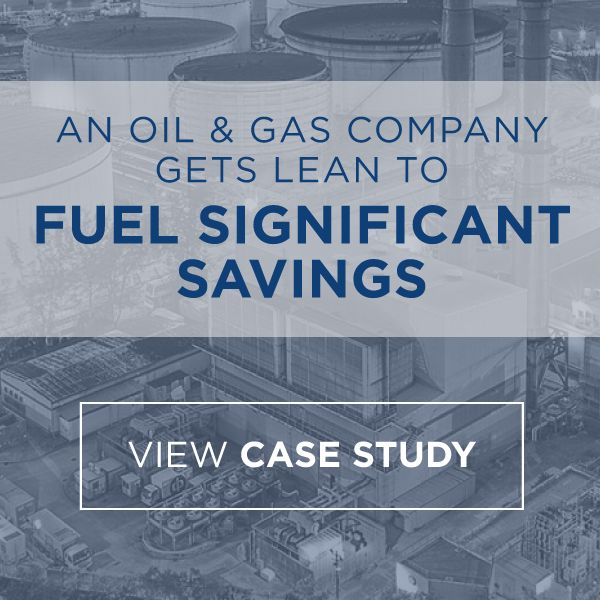
7 Tactics to Solve Challenges in 2024 for the Oil and Gas Industry
The 2024 forecasts for the oil and gas industry include some conflicting speculation about supply and demand. It’s leading to confusion for U.S. companies… not to mention dismay as people everywhere scowl at the gas pump when they’re filling up.
Reuters reported in August that OPEC+ expects to see supply cuts that impact oil inventories, which will drive prices potentially higher than the $88 per barrel of crude in August 2023, the highest price since January. OPEC+ is confident, however, that demand will rise markedly.
But… the International Energy Association (IEA) doesn’t quite agree with those numbers, noting that the fluctuating economy will impact manufacturing businesses, and coupled with the tsunami of electric vehicles, will shake out in the form of falling demand.
Those clear-as-mud speculations boil down to one thing: Uncertainty is ahead for an industry that has already had its fair share.
All industries have been weathering uncertainty for the past few years, starting with the pandemic and, once we thought we had that handled, continuing with a shaky economy, a cried-wolf recession and ever-rising interest rates, putting consumer confidence on shifting sands.
At USC Consulting Group, we specialize in helping companies through uncertain times by optimizing their processes, becoming as efficient as possible and positioning themselves on solid ground to handle whatever is coming down the pike.
Preparing the Oil & Gas industry for an uncertain 2024
Here are seven ways the oil and gas industry can shore up for an uncertain 2024. Though separate goals, all work together to make companies as efficient and productive as they can be.
1. Reducing costs
Is there ever a year when companies in any industry shouldn’t focus on reducing costs? That’s a given, 24/7/365. But, it’s especially important for oil and gas going into 2024, when the economy continues to be volatile and uncertain. Buttoning up costs is a good strategy for the industry to get through that storm. It’s about optimizing production processes in the field and reducing extraction costs in order to offset costs involved in finding new sites.
2. Managing supply chain risks
After the supply chain bottlenecks most every industry experienced during the pandemic, it’s vital to mitigate supply chain risks. It’s a burr under the saddle of the entire industry. Fluctuating costs and supply uncertainty can impact the entire operation. Oil and gas companies need a little breathing room, predictable lead times and a more secure footing going into next year. Securing your supply chain is one way to achieve that. It can help avoid the market roller coaster we’ve seen in the recent past and may help ease pressure from inflation as well. The bonus here is, it can save about 15% on costs.
Developing a solid risk assessment plan that takes into consideration what’s happening at the supplier level will secure your supply chain and prevent any surprise shortages.
3. Focusing on yield
Maximizing yield, like reducing costs and managing supply chain risks, brings solid benefits in any economy, but especially now. It means making sure extraction techniques are as efficient as possible, utilizing methods like Enhanced Oil Recovery to extract more oil from reservoirs that may have been underutilized, managing those reservoirs carefully and by the numbers, and making sure employees across all facilities are on the same page.
4. Closing the how-why gap
In an organization the front line often does not understand the “why,” and the executives don’t understand the “how.” It means, the top brass do not fully understand how the job gets done and the frontline workers don’t fully understand why the job needs to be done. Closing that “how-why gap” is critical for optimal performance all the way up and down the organizational food chain.
5. Standardizing daily and weekly instructions for front-line managers
Going hand in hand with closing that how-why gap is increased training for managers. Many industries like oil and gas rely on frontline training, but some people would say that supervisors need even more. Training trickles down, but efficiency does, too. And the key to that is making sure everyone, across all departments and facilities, is on the same page, doing the job the same way, with a standard set of operating procedures. It’s a vital component for optimal efficiency.
6. Consolidation and acquisition = increased need for communication
New talent, ideas and perspectives can breathe life into a company. Mergers and acquisitions in the oil and gas industry exploded in Q2 2023, according to Enverus Intelligence Research. After $8 billion M&A in Q1 2023 (nothing to sneeze at) we saw $24b in Q2. It’s in line with increased consolidations, as reported by Forbes, with the goal of lowering costs, raising inventory and in the end, boosting investor returns.
All of that M&A activity can put a strain on employees of affected companies. Especially during this flurry of M&A, it’s important to find solutions to help them with the complexities of combining two “legacy” groups, which have their unique set of standards. Finding ways to combine both schools of thought into one set of “best practices” after a merger is paramount to its success. To learn more about it, read our recent case study: “Creating Harmony When Merging Two Companies.”
7. Performing scheduled maintenance
The goal is zero unplanned downtime. Pros in the industry know that’s not so easy to achieve. It starts with asset monitoring, including wells but also pipelines, processing facilities and other equipment to maximize operational efficiency. Scheduling downtime for maintenance ensures a shutdown, but it also ensures you’ll know when it’s coming and can plan accordingly. Unplanned failures or glitches can be costly problems at best but dangerous threats to workers at worst.
At USC Consulting Group, we’ve been working with the oil and gas industry for decades. If you’re interested in optimizing your company’s efficiency in this uncertain economy, give us a call.






